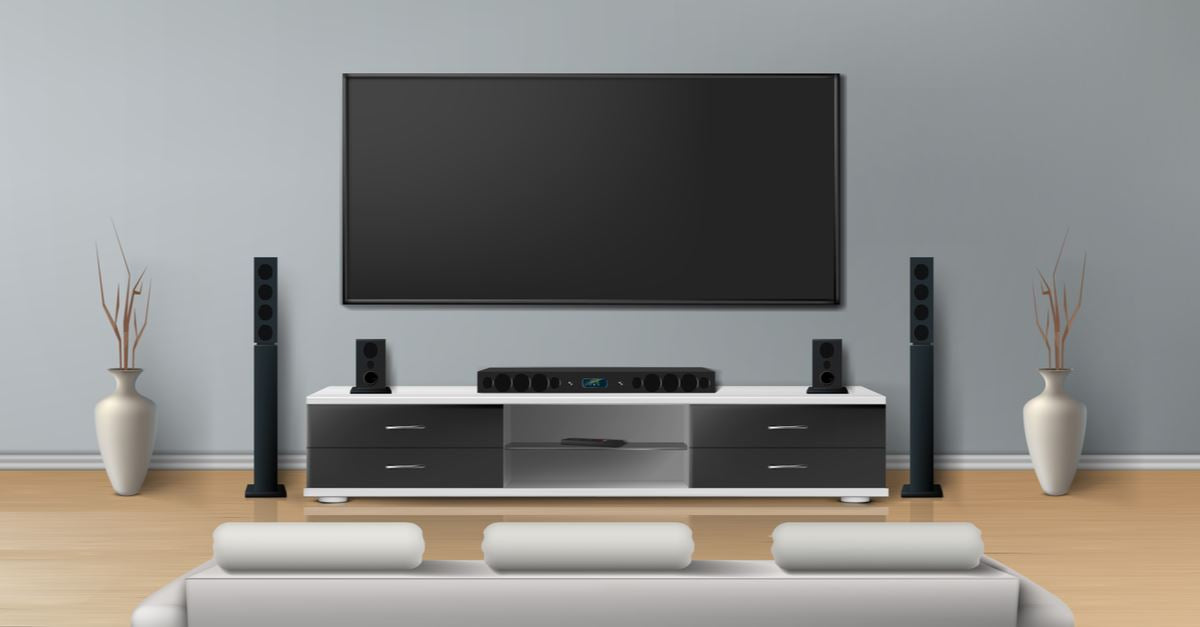
Getting the Best Surround Sound from Your Home Theater System
If you've ever watched a movie in a theater with surround sound, you'll know how much better it is than listening to the same movie on an old television. The sound is richer, the dialogue is clearer, and the overall experience is a lot more immersive. When building your own home theater system, you want to recreate those same experiences in your space.
5 Steps to Ensure You're Getting the Best Surround Sound from Your Home Theater System
If you're looking into building a home theater system, then you'll want to make sure you get all your ducks lined up in a row. Not quite sure where to begin? Here are 5 steps to help ensure you're getting the best surround sound from your home theater system:
1. Identify the Size of the Room and the Type of Sound You Want to Achieve
First, you'll want to take stock of your room. You'll need to identify the amount of space you have to work with and the type of sound you want to achieve.
For example, if you're trying to build a home theater system in a small apartment, then you probably won't want to get a massive speaker system that will overpower the room. Instead, you'll want to get a system that's small in size but still delivers quality sound.
On the other hand, if you have a large house or are building a sound system in the basement, then you can afford to get a larger system that delivers more bang for your buck.
2. Explore the Different Types of Home Theater Systems
Once you've identified the size of the room, you can explore the different types of home theater systems that are available. There are two primary types of home theater system setups: a full surround sound system, and a simple home theater in a box system.
- Full Surround Sound System: Uses a combination of speakers, wires, and amplifiers to pump out the highest quality audio.
- Home Theater in a Box System: This is a much simpler setup. It typically includes an all-in-one setup or a sound bar and small additional speakers that simply plug into your TV.
What's important is that you make the most logical decision based on not only your budget, but the available space you have to work with to get the most out of your surround sound.
3. Have the Right Speakers and Position Them Properly
Once you've decided on the type of home theater system you want to build, it's time to get to the fun part: shopping! There are several speakers and sound systems to choose from, and you'll want to make sure you have the right equipment for your system.
For example, a soundbar won't deliver the same sound quality as a surround sound system, but it will be a lot easier to install and won't take up as much space.
If you have more room to work with and decide that you would like to build a multi-speaker system, you'll need to determine the best placement for each speaker.
For most home theater systems, you'll want to place the front speakers on either side of the TV. The rear speakers should be placed on the walls behind the couch, ideally at ear level. The subwoofer will be placed in the corner of the room, typically near the television.
4. Use High-Quality HDMI Cables for Better Signal Transmission
Once you've got your home theater speakers in place, it's time to connect them all. This is where high-quality HDMI cables come in.
HDMI cables are often overlooked when it comes to home theater systems, but they're critical. They transmit the audio signal from the TV to the speakers, which is why you'll need to use high-quality cables for the best quality sound.
Cheap, low-quality HDMI cables can cause audio distortion, lowering the quality of your system. If you want to ensure you're getting the best sound possible from your home theater system, then you'll want to invest in high-quality HDMI cables.
5. Properly Wiring Your Speakers
Once you've got your speakers hooked up to your home theater system, it's time to get them all playing together. This process can be confusing if you've never done it before, so here are a few tips to help you get it right.
- Connecting Your Devices: In order to work, your devices will need to be connected to the home theater system through an amplifier. This means that you'll need to connect your devices using HDMI cables. If you're using an older device without an HDMI port, then you'll need to use an adapter to convert the signal to HDMI.
- Wiring Your Speakers: You'll want to connect the amplifiers to the speakers using speaker wire. It might seem like a daunting task, but it's pretty simple. All you need to do is connect one end of the wire to the speaker, and the other end to the amplifier. To create the most secure connection, you'll want to thread your speaker wire to a banana plug. This will also help you get the best connection and deliver the best sound quality.
- Ensuring Everything is Plugged In: After you've connected your devices and wired your speakers, it's time to test everything out. It's easy to forget to plug something in, so you'll want to make sure everything is connected correctly. You can do this by using a test disc to play audio from a DVD or Blu-ray player.
Create Your Dream Home Theater System
With the right research and access to the proper tools, building your dream home theater system doesn't have to be nearly as daunting as it may seem! Just take your time and don't rush the process.
